ABSTRACT
Battery energy storage systems (BESSs) have been widely used for micro-grid control. Generally, BESS control systems are based on proportional-integral (PI) control techniques with the outer and inner control loops based on PI regulators. Recently, model predictive control (MPC) has attracted attention for application to future energy processing and control systems because it can easily deal with multi-variable cases, system constraints, and non-linearities. This study considers the application of MPC-based BESSs to micro-grid control.
Two types of MPC are presented in this study: MPC based on predictive power control (PPC) and MPC based on PI control in the outer and predictive current control (PCC) in the inner control loops. In particular, the effective application of MPC for micro-grids with multiple BESSs should be considered because of the differences in their control performance.
In this study, micro-grids with two BESSs based on two MPC techniques are considered as an example. The control performance of the MPC used for the control micro-grid is compared to that of the PI control. The proposed control strategy is investigated through simulations using MATLAB/Simulink software. The simulation results show that the response time, power and voltage ripples, and frequency spectrum could be improved significantly by using MPC.
MPC FOR BESS
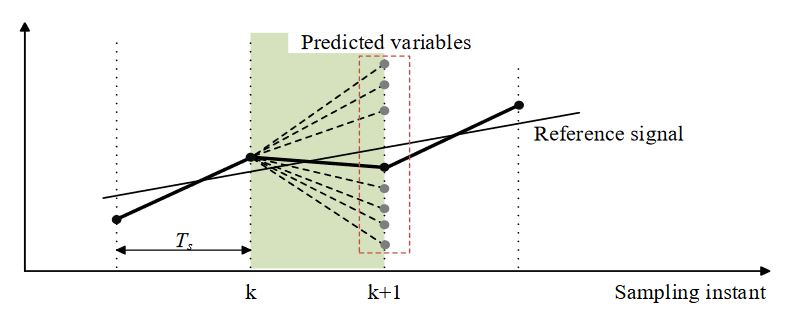
Figure 2. Principle of MPC
MPC is based on the inherent discrete nature of a power converter, which has a finite number of switching states. All possibilities of variables (current or real/reactive powers) of the converter according to switching states can be predicted. The predicted variables are compared to the reference control signal, and the predicted variable that is closest to the reference control signal is chosen as shown in Figure 2. Then, the switching state related to this predicted variable is applied to control the converter.
TEST MICROGRID
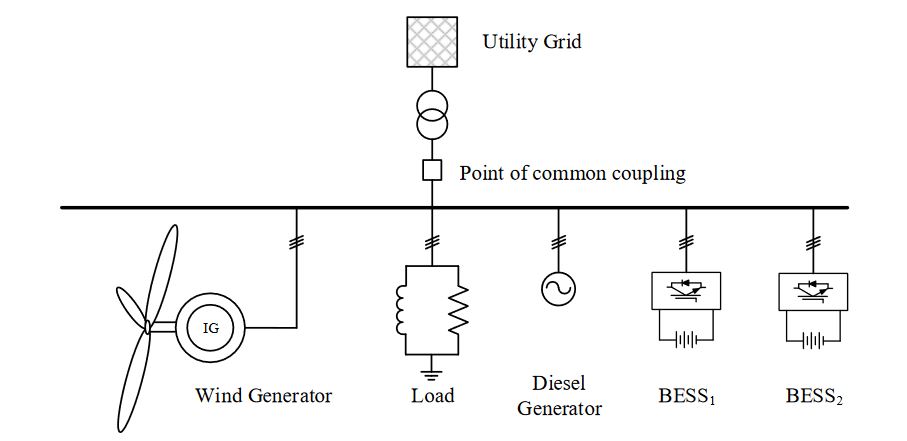
Figure 4 . Configuration of microgrid
The test microgrid system (Figure 4) used in this study includes several components: A diesel generator, a consumer load, a wind generator, and two BESSs. Table 2 shows the parameters of the test microgrid system. In this study, the fixed-speed wind energy conversion system (WECS), a type of WECS, is used for simplicity. Two BESSs with different control strategies according to the operation mode of the microgrid, as shown in Table 3, are used. In the grid-connected mode, the voltage and frequency of the microgrid is set by the utility grid.
CONTROL PERFORMANCE OF MPC TECHNIQUES
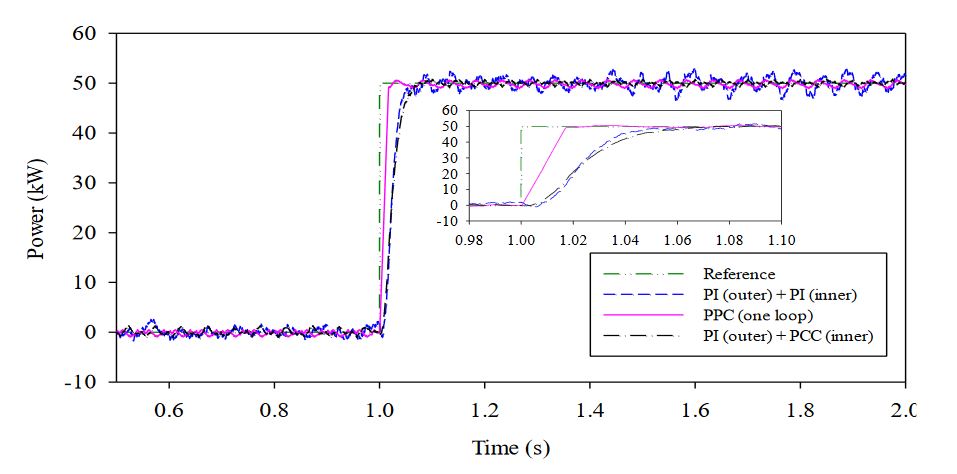
Figure 5. Response of different control techniques for change in reference power
Figure 5 shows the simulation results of three types of control techniques. The real power changes from 0 to 50 kW at 1.0s. The response of the PPC technique is clearly much quicker than that of other techniques. In the case of MPC based on PI in the outer and PCC in the inner control loops and PI control technique using PI regulators in the outer and inner control loops, the dynamic response is similar owing to the action of the PI controller in the outer control loop.
Both MPC technique based on PI and PCC and PI technique show good reference tracking under the steady-state condition. However, the power ripple obtained by MPC technique is smaller than that obtained by PI control technique owing to PCC in the inner control loop in MPC technique.
SIMULATION RESULTS
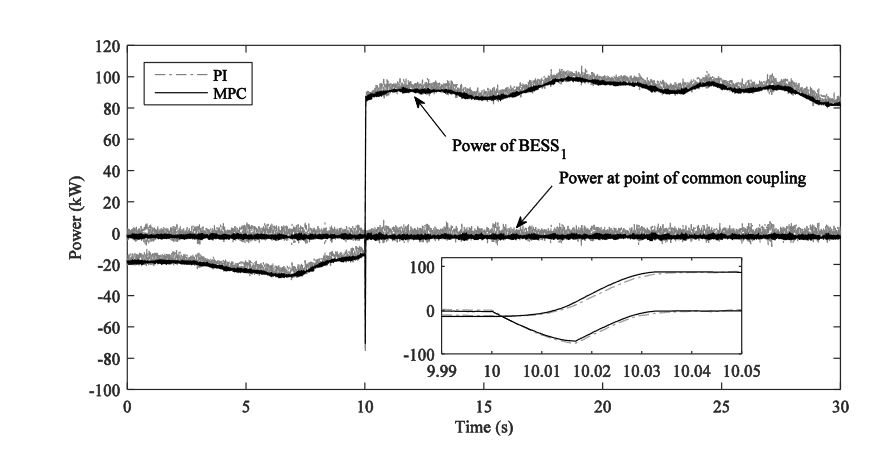
Figure 7. Real power at point of common coupling and real power of BESS
On the other hand, BESS based on the PPC technique controls the power at the point of common coupling. In this study, it is assumed that the real power at the point of common coupling is maintained at zero. Figure 7 shows the simulation result. At 10s, an additional load of 100 kW is connected to the micro-grid. Therefore, BESS increases its real power to maintain the power at zero. The sub-figure of Figure 7 shows that the response of the MPC technique is slightly quicker than that of the PI control technique. Additionally, the ripples of the BESS power when using the MPC technique is smaller than that of PI control technique.
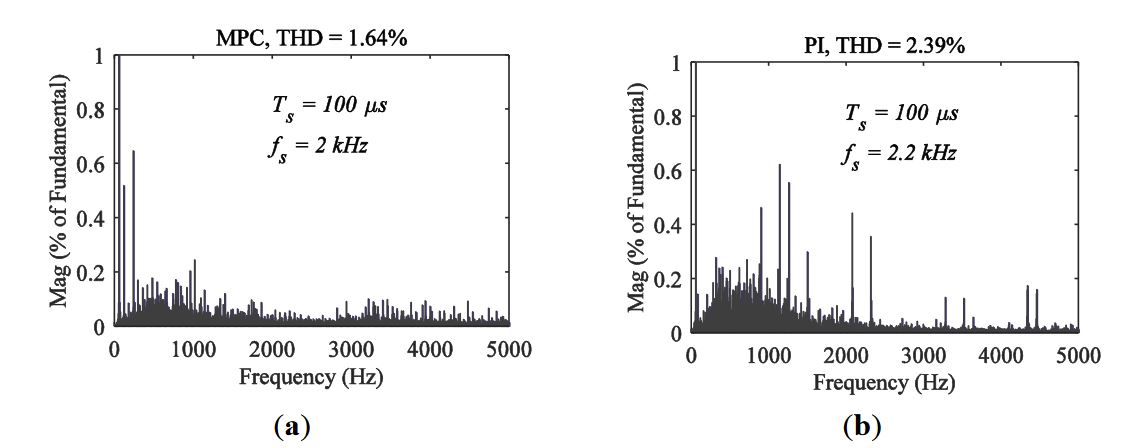
Figure 10. Load voltage spectrum and THD: (a) MPC technique; (b) PI technique
Figure 10 shows a comparison of the voltage spectra of the MPC and PI control techniques. As shown in Figure 10b, the frequency spectrum generated using the PI control technique is concentrated around the carrier frequency owing to PWM. For comparison, Figure 10a shows the frequency spectrum obtained by MPC. The reduction of the switching frequency of the converter is implemented in the cost function of MPC as a secondary control objective to reduce the power losses of converters.
CONCLUSIONS
This study discusses the effective application of two types of MPC techniques to BESSs for microgrid control: MPC based on PPC and MPC based on PI control in the outer control loop and PCC in the inner current control loop. In addition, PI control using a PI regulator in the outer and inner control loops for BESS was compared to these two types of MPC techniques. A reduction switching frequency is implemented in the cost function to reduce the power losses of converters. The simulation results show that the response time, power ripples, and frequency spectrum could be improved significantly by using MPC techniques.
Both the average switching frequency and the THD obtained by using MPC techniques were lower than those obtained by using PI control. Using MPC based on PI control in the outer and PCC in the inner control loops did not improve the response time under power changing compared to PI control; however, it could significantly improve the power and voltage ripples under the steady-state condition. Moreover, using PPC-based MPC could reduce the response time under power changing compared to other control techniques.
Therefore, in micro-grids with multiple BESSs, the PPC-based MPC technique should be applied for BESSs that control the power at the point of common coupling and the frequency of the micro-grid, and an MPC technique based on PI in the outer control loop and PCC in the inner control loop should be applied for BESSs that play the role of smoothing wind power fluctuations. Besides, in case of micro-grids with a BESS, PCC-based MPC technique should be a suitable alternative for the BESS owing to its flexible characteristic. MPC technique is easy to implement and it can eliminate the tuning controller parameters effort that has to be done in the PI technique. Furthermore, various control objectives can be included in the MPC strategies.
Source: Incheon National University
Authors: Thai-Thanh Nguyen | Hyeong-Jun Yoo | Hak-Man Kim
>> More Matlab Projects on Signals and Systems for Engineering Students
>> 200+ Matlab Projects for Control System for Final Year Students